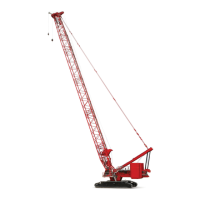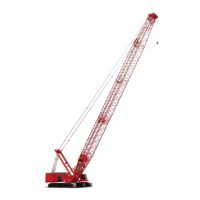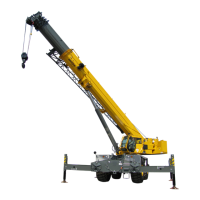SET-UP AND INSTALLATION MLC650 VPC-MAX™ OPERATOR MANUAL
4-84
Published 04-06-18, Control # 231-14
d. Avoid dragging the wire rope in the dirt or around
objects that can scrape, nick, cut, or crush the wire
rope.
2. Carefully inspect the drums and all rope guides, rollers,
and sheaves for defects that can cause the wire rope to
wear or be cut. If defects cannot be fixed, replace the
faulty parts.
3. Apply tension to the wire rope as it is wound slowly onto
the drum.
a. The first wrap of wire rope must be tight against the
drum flange for the approximately three-fourths of
the drum diameter (View A, Figure 4-72
).
b. Tap the adjacent wraps against each other with a
soft metal or wooden mallet as the wire rope is
spooled onto the drum.
c. Use extreme care not to put twists or turns in the
wire rope. Allow the rope to assume its natural lay.
CAUTION
Avoid Wire Rope Damage
Voids or spaced wraps (View B, Figure 4-72) in the first
layer will permit movement and a wedging action with the
subsequent layers. Crushing and abrasion of the wire
rope will occur.
Never allow the wire rope to “cross-wind” on the drum.
Item Description
1 Wraps of first layer tight against drum flanges and each
other
2 Wedge
3 Tight against drum flange for 3/4 of diameter
4 Voids and loose wraps in first layer will cause sever wear
of wire rope
View A
View B
FIGURE 4-72
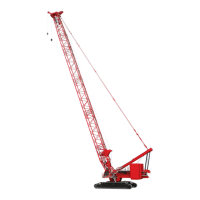
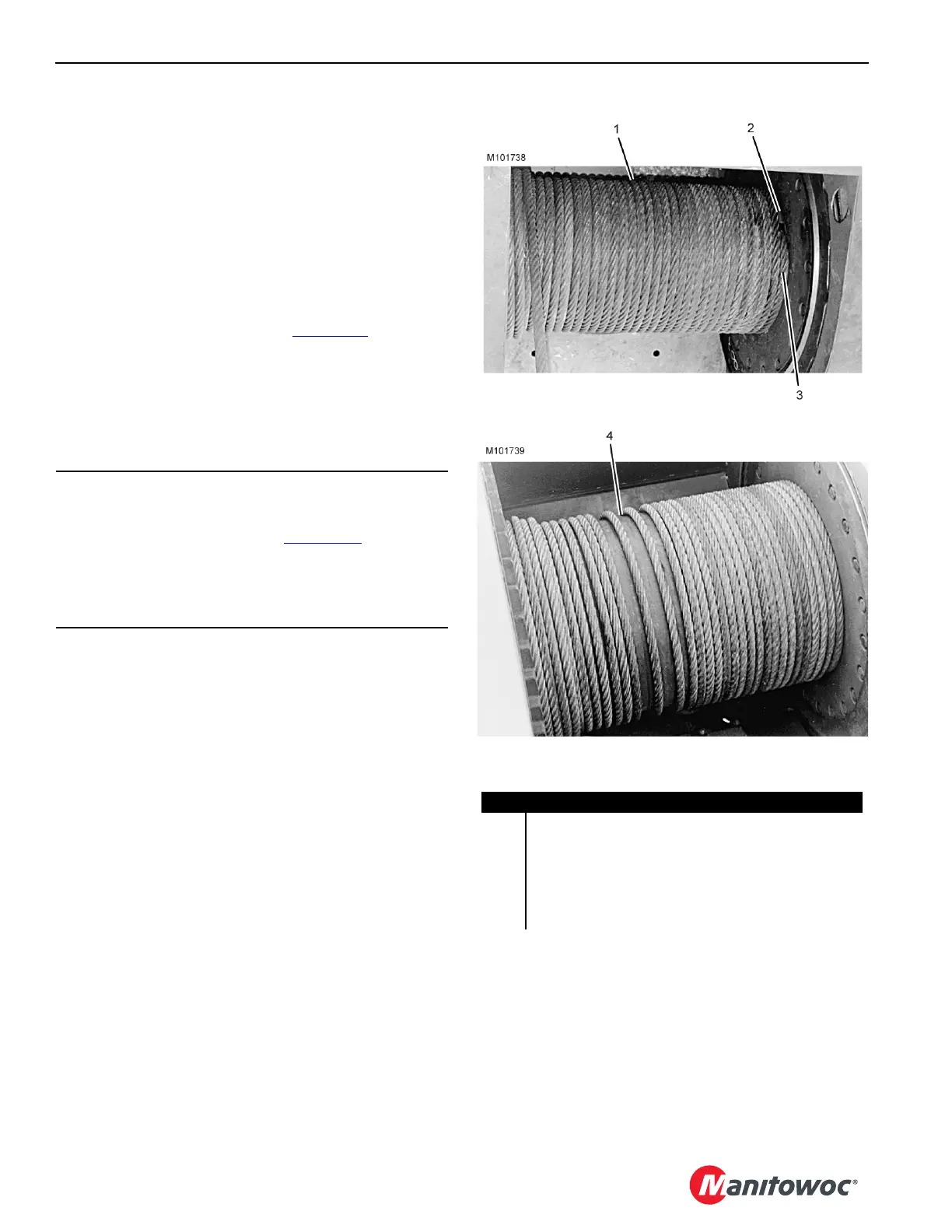